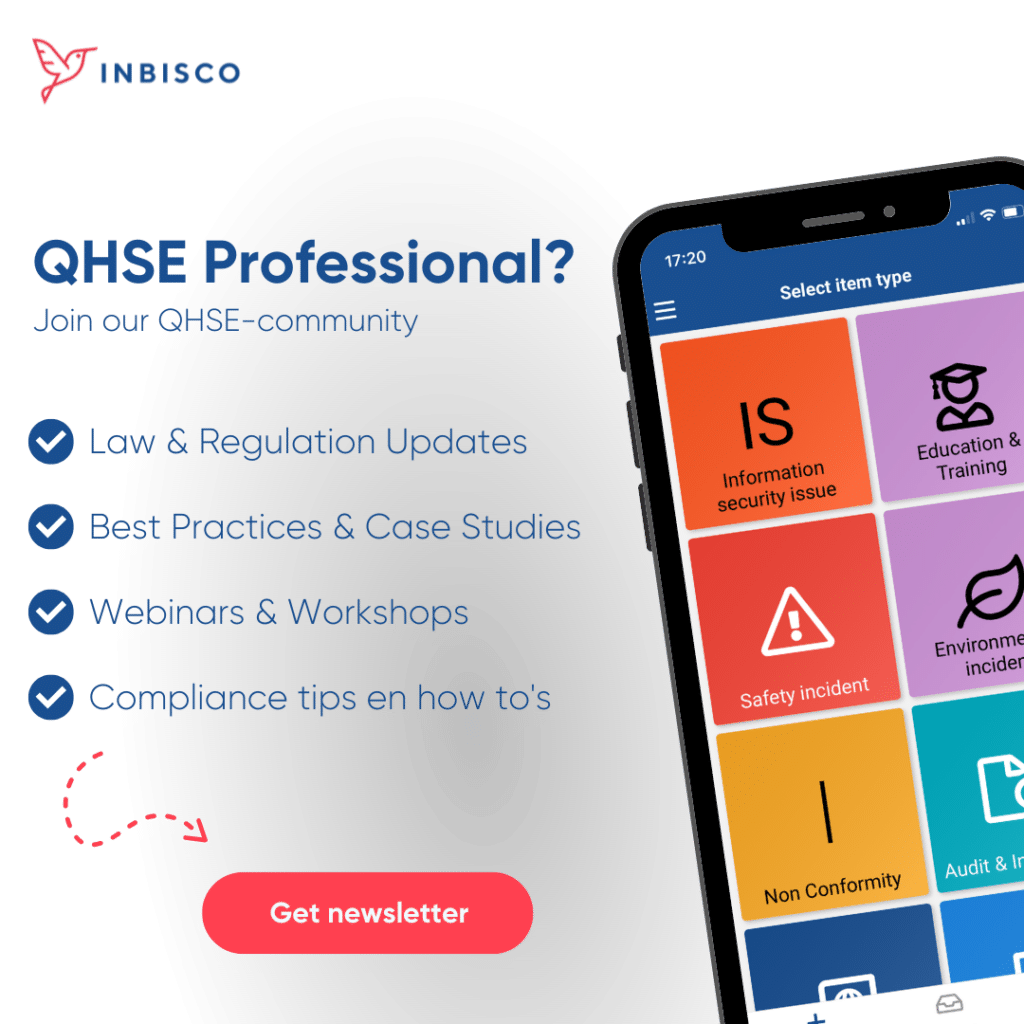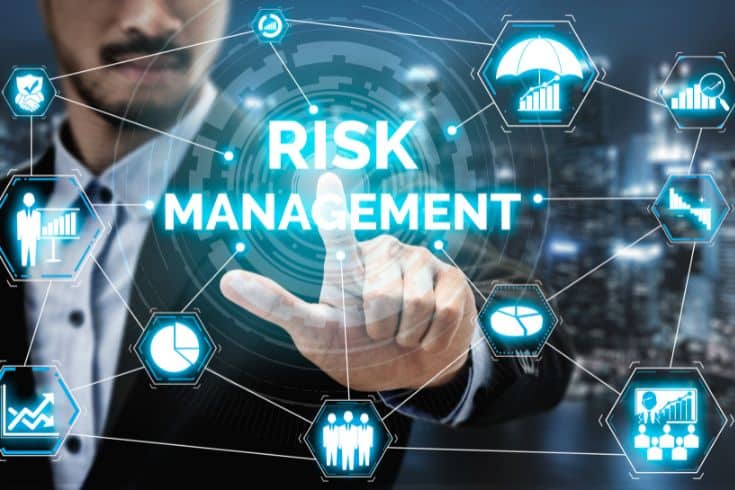At INBISCO we love risk management. Why? Because by implementing effective risk management in your organization, you can always be one step ahead of ‘less pleasant’ organizational scenarios. This way, you literally avoid risks, find opportunities to improve and innovate in risks and ultimately save unnecessary costs and time. Risk management is very valuable for every organization and that is why in this blog we will delve deeper into what risk management entails and the many advantages of this form of management.
What is risk management?
Risk management is the term for the structured mapping of risks within your organization, analyzing, evaluating and ultimately actively tackling and managing them. Within risk management, you inventory which risks there are or may possibly arise, link the possible consequences to this and can thus analyze which measures need to be taken. This actually sounds quite obvious, but risk management takes time and must be constantly monitored in order to actually benefit from it. This means that effective risk management must be encouraged in an organization to make everyone actually think about risks and act accordingly when making decisions and considerations.
Why is risk management valuable?
Risk management is so valuable because with an effective risk policy you can prevent certain dangers to your business operations. This includes dangers in the workplace, but also reputational damage or security issues. With effective risk management you can better anticipate risks and take the necessary measures to prevent them in order to guarantee your quality and continuity. In addition, risks can indicate certain points in your business operations that can lead to inspiration for innovation. Because if things often (possibly) go wrong, why not do something new that makes it even better than normal? For this reason, risk management is not only a way to stay ahead of all your risks, it also creates new opportunities for improvement and innovation.
Read more about our risk management application RAS here:
RAS
How do you apply effective risk management?
You can apply risk management by assessing risks within your processes and/or in projects. In general, you go through 6 steps in effective risk management in which you first look at all the risks that are at stake, then analyze these risks and finally manage, monitor and tackle these risks. These next five steps are:
- Identifying the risks: The first step (and most logical) in this process is identifying the risks and grouping them based on certain aspects, topics or business areas, such as financial and security or at operational, tactical or strategic level.
- Analyzing and evaluating the risks: In the second step, you will delve into the risks that you identified in the first step. Here you will look at the origin of the risks, the possible impact of the risks, which business aspects are involved and which employees/departments are involved. In this step, it is important that you look carefully at how these risks can influence the flow of your business processes. A risk can be limited to a process, but risks often have an impact on multiple processes. Therefore, look carefully at the influence on the continuity of your organization for each risk. This is the only way to really get a grip on your risks.
- Managing your risks: In this step, you will look at which measures you must/can take to prevent your risks or reduce their impact and thus manage your risks. In this step, you must carefully analyze all future scenarios and see which measures can be applied to them to limit your risks. You can choose to limit or eliminate certain activities or tasks, but you can also come up with alternative ways to achieve certain end goals by working around your risks. You can also implement a new policy, take precautions through insurance, or tackle your entire process and use your risks to improve quality. Of course, your measures all depend on how big your risk is.
- Monitoring your risks: Once you have determined the measures for your risks, you will of course need to implement and monitor them to see if they are effective. This brings back the fact that risk management is not a snapshot; effective risk management is a continuous process. Since constantly changing circumstances occur in every organization, risks must be constantly tracked, analyzed and monitored.
- Controlling and reporting risks: In the fifth step, you will check your monitored risks and evaluate whether the measures taken for the risks were effective and successful. In addition, reporting must be done on every aspect of the identified risks in order to clearly record the risks so that everyone within the organization can act on these reports.
- Integrating risk measures into strategy & decision-making: Once you have created a clear and transparent report of all your risks, you can also use this to formulate and realize new strategies and integrate these into decision-making processes. In this last step, an important and promising part of risk management emerges. Namely; that you can use the information about risks in your organization for improvements and innovation in your business structure. Our advice; do not look at risks through a negative lens, but see risks as an opportunity to improve!
Risk Inventory & Evaluation (RI&E)
Risk Inventory & Evaluation (RI&E) is a crucial process for organizations to ensure that their working environment is safe and healthy for employees. However, conducting an effective RI&E can be a challenging task, especially when it comes to collecting and analyzing data, identifying risks and drawing up appropriate measures. Fortunately, INBISCO’s process and quality management software offers a valuable solution. In this article, we will discuss how the software can support organizations in conducting RI&E. We will also share useful examples and a plan of action.
Read the article on Risk Inventory & Evaluation (RI&E)
INBISCO & Risk Management
As mentioned before, risk management must be constantly maintained and monitored and you must clearly and transparently record all your risks in order to be able to analyze them properly and use them optimally. In addition to the fact that risk management is very useful, it is not a pleasant experience in terms of time and effort. For this reason, we have created our risk analysis application (RAS). RAS is a safe, accessible and convenient system and ensures that you can easily do all the above steps in one application. This way, every organization can easily perform and maintain risk management and get the most out of it to improve their quality.
Read more about our risk analysis application here:
RAS
Interested?
Interested in our software or have questions about what we do? Feel free to contact us and request a free demo!

